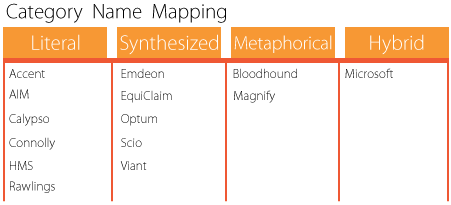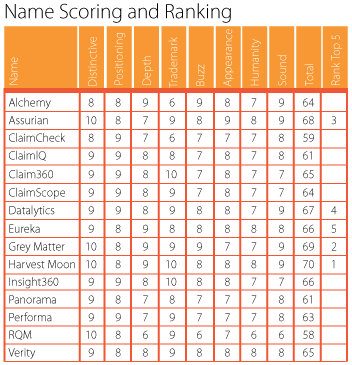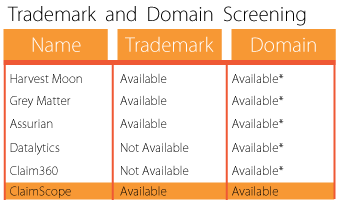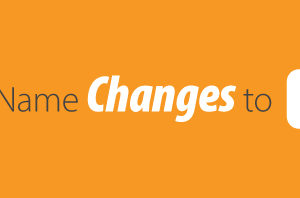
Certainly the brand naming of high profile social media networks, and tech startups garner media attention. Some names are happened upon by the founders, others the result of staff naming contests, while some names are the suggestions of helpful spouses or mother-in-laws. Each of these scenarios minimize one of the most important and strategic decisions a company will ever make, especially startups.
At IDeas BIG, we employ a systematic, 10-Step process for naming companies or products, including tech startups. Following is a case study glimpse of this naming process. In this case, a healthcare technology startup.
The first step in any naming process is due-diligence, or learning about the brand, product or company, along with it’s competitors (both direct and indirect competitors). Ideally, we gain some understanding of competitive or desired positioning. We use a (proprietary) survey that when completed, can capture most of this insight. Internet searches on the brand and competitors to further this understanding.
With this information, we define the naming assignment and identify keywords that relate to the brand. Next, keywords are grouped into similar categories, or what we call positioning platforms. This is where a case study can help illustrate. For the healthcare technology startup which will remain anonymous, following is a snapshot, a look under the hood, the anatomy of a brand name development project.
Naming a Healthcare Technology Startup
New “Brand X” is a data mining and cost recovery service in the health insurance category. Customer targets our the largest health insurance carriers in the United States only, as different countries have different laws and requirements. Targets include claim operations titles, as well as financial titles, e.g., CFO.
Like many startups, internal managers created a the initial brand name. In this case, the name was the acronym RQM, which stands for Reimbursement Quality Management. Not surprisingly, this name was launched, and did not get positive feedback from customers. That’s when the client called IDeas BIG.
We studied the client’s existing marketing, website, and other assets, along with competitors. Early in the process, we mapped competitor brand names by name type: Literal, Synthesized, Metaphorical and Hybrid (see chart below). For information on brand name types, link to our blog Whats Your Name Type?
The next step in brand name development is the identification of keywords that relate to the brand. For this startup, following is a partial list of keywords:
- Health insurance claims
- Data mining
- Overpayment
- Reimbursement
- Accuracy/Precision
- Comprehensive
- Analysis
Finally, we can generate brand name candidates, but we do so by the positioning platforms and keywords identified in the earlier exercise. Depending on the client budget, IDeas BIG typically generates 50-100 brand name candidates. Next, we use a proprietary technique we call NAME OPTIMIZATION™, to score candidates on several criteria including distinctiveness, relevance, depth of meaning, trademark and domain availability, buzz potential, appearance, sound and others. The scores are then ranked highest to lowest, and the top ten or so are selected for the next step: trademark and domain screening. Following is the scoring and ranking of several name candidates, including the client’s original name (RQM).
As mentioned, top ranked names, along with client name selections are screened for trademark and domain availability. It is not common to eliminate up to 90% of name candidates because the trademark or domain are NOT available. Following are the results of this screening:
Eureka, We Have a Name!
The client did not select the highest ranked names, but instead, several non-ranked name candidates with the word Claim. The favorite, Claim360 did NOT pass trademark availability. Another, ClaimScope, passed both the trademark and domain availability screening. The word claim catches the attention of the target, insurance carriers. While the word Scope reinforces the completeness of the data mining and cost recovery. As always, several other name candidates were not available as trademarks or domains, and hence, we evaluate many options, careful not to grow attached to ones that simply cannot be used.
A lot of hard work, but case study proof that you can develop your own name, which is typically not strategic or interesting to your customers, or get the advice of a professional.
Related Resources:
Naming a Startup: Advice from Startup Mentors
Brand Beginnings- How did Some of the Biggest Brands Get Their Start?
Startup Brand Naming: What’s Behind those Quirky Names?
What do you think? Please comment below, and share with your associates. And do call us if you need a name.







